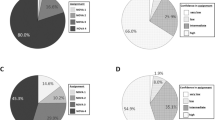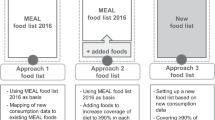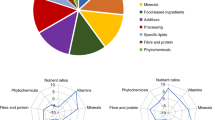Abstract
Background/Objectives:
The objective of this study was to identify the common requirements of users involved in the compilation of food composition data sets with a view to informing the development of a common access system to food composition data, within the European Food Information Resource (EuroFIR) project.
Subjects/Methods:
A number of examples of food composition data set compilation have been examined using the Use Case approach, namely the compilation of a data set for a national nutrition survey, for a cross-national nutrition study and for a nutritional software programme.
Results:
The key user requirement identified from the compilation step analysed by the Use Case approach is the increased availability of and access to more detailed food composition data on a wider range of foods and nutrients.
Conclusions:
Food composition data serve a variety of purposes, and different user groups will often have both common needs and more individual or specific needs of their data sets. The development of Use Cases for specific processes effectively identifies the needs of users, highlighting any similarities and/or differences in those needs. The application of the Use Case approach to support the software development activities within EuroFIR will ensure that user needs are effectively identified and captured in a systematic and documented way.
This is a preview of subscription content, access via your institution
Access options
Subscribe to this journal
Receive 12 print issues and online access
$259.00 per year
only $21.58 per issue
Buy this article
- Purchase on Springer Link
- Instant access to full article PDF
Prices may be subject to local taxes which are calculated during checkout
Similar content being viewed by others
References
Charrondière UR, Vignat J, Møller A, Ireland JD, Becker W, Church S et al. (2002). The European Nutrient Database (ENDB) for nutritional epidemiology. J Food Comp Anal 15, 435–451.
Church S (2006). The history of food composition databases. Nutr Bull 31, 15–20.
Deharveng G, Charrondière UR, Slimani N, Southgate DAT, Riboli E (1999). Comparison of nutrients in the food composition tables available in the nine European countries participating in EPIC. Eur J Clin Nutr 53, 60–79.
Egan MB, Fragodt A, Raats MM, Hodgkins C, Lumbers M (2007). The importance of harmonizing food composition data across Europe. Eur J Clin Nutr 61, 813–821.
Egan MB, Hodgkins C, Fragodt A, Krines C, Raats MM (2009). User-centred food composition data - analysis of user needs through the Use Case Approach. Food Chem 113, 804–807.
Greenfield H, Southgate DAT (2003). Food Composition Data: Production, Management and Use 2nd Edition, FAO Rome.
Jacobson I, Christerson M, Jonsson P, vergaard G (1992). Object-orientated software engineering: a Use Case driven approach. Inform Software Tech 34, 825–826.
Kanyaru JM, Phalp K (2009). Validating software requirements with enactable Use Case descriptions. Requirements Eng 14, 1–14.
McCabe-Sellers BJ, Chenard CA (2008). Meeting the needs of US dietitians for food composition data. J Food Comp Anal 21, S27–S34.
Møller A, Unwin ID, Becker W, Ireland J (2007). EuroFIR's food databank systems for nutrients and bioactives. Trends Food Sci Tech 18, 428–433.
Raats MM, Angus F, Lumbers ML (2004). An assessment of issues pertinent to the future development of The Composition of Foods. Report prepared for the Food Standards Agency.
Siau K, Lee L (2004). Are Use Case and class diagrams complementary in requirements analysis? An experimental study on Use Case and class diagrams in UML. Requirements Eng 9, 229–237.
Stumbo PJ (2003). Novel software applications using nutrient databases. J Food Comp Anal 16, 293–297.
Westenbrink S, Oseredczuk M, Castanheira I, Roe M (2009). Food Composition Databases: the EuroFIR approach to develop tools to assure the quality of the data compilation process. Food Chem 113, 759–767.
Williamson C (2005). The different uses of food composition databases, Synthesis report No. 2. Available at URL:www.eurofir.net/UsesspofspFCDBs.pdf.
Acknowledgements
This work was completed on behalf of the European Food Information Resource Consortium and funded under the EU 6th Framework Food quality and Safety programme, project number FP6-513944.
Author information
Authors and Affiliations
Corresponding author
Ethics declarations
Competing interests
The authors declare no conflict of interest.
Rights and permissions
About this article
Cite this article
Egan, B., Hodgkins, C., Fragodt, A. et al. Compilation of food composition data sets: an analysis of user needs through the Use Case approach. Eur J Clin Nutr 65, 757–760 (2011). https://doi.org/10.1038/ejcn.2011.24
Received:
Revised:
Accepted:
Published:
Issue Date:
DOI: https://doi.org/10.1038/ejcn.2011.24



